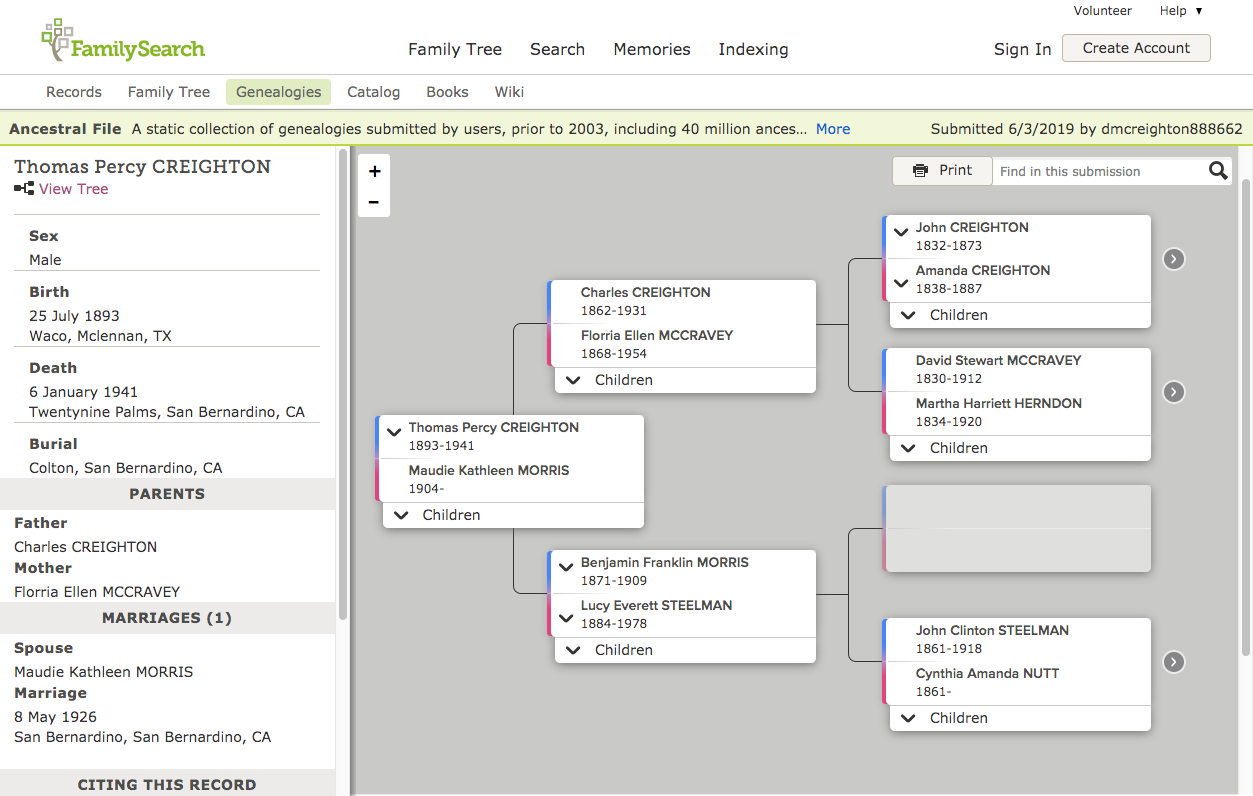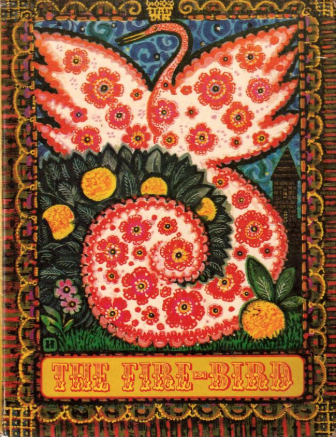...
Categories | Examples |
|---|---|
|
...
http://ark.bnf.fr/ark:/12148/btv1b8449691v/f29
...
There is no charge to obtain or use a NAAN, and you can request one by filling out an online form. Over 500 organizations have NAANs – libraries, archives, museums, university departments, government agencies, scholarly and educational publishers, projects, etc. – all listed in the public NAAN registry.
...
You are free to create ARK strings as you wish, provided you use only digits, letters (ASCII, no diacritics), and the following characters:
= ~ * + @ _ $ . /
The last two characters are reserved in the event you wish to disclose ARK relationships.
Another A unique feature of ARKs is that hyphens ('-') may appear but are identity inert, meaning that strings that differ only by hyphens are considered identical; for example, these strings
ark:/12345/141e86dc-d396-4e59-bbc2-4c3bf5326152
ark:/12345/141e86dcd3964e59bbc24c3bf5326152
identify the same thing. The reason for this feature is that text formatting processes out in the world routinely introduce extra hyphens into identifiers, breaking links to any server that treats hyphens as significant.
ARKs distinguish between lower- and upper-case letters, which makes shorter identifiers possible (52 vs 26 letters per character position). The "ARK way", however, is to use lower-case only unless you need shorter ARKs. The restriction makes it easier for resolvers to support your ARKs in case they arrive from the world with mixed- or upper-case letters, which happens regrettably often due to the lingering 50-year-old assumption that identifiers are case-insensitive. You might also consider using the character repertoire of the Noid tool, which creates transcription-safe strings using the strongest mainstream identifier check digit algorithm; it uses only digits and consonants minus 'l' (letter ell, often mistaken for the digit 1):
0123456789bcdfghjkmnpqrstvwxz
Regarding assignment, one common strategy is to leverage legacy identifiers. For example, a museum moth specimen number cd456f9_87 might be advertised under the ark:/12345/cd456f9_87. Some legacy identifiers may need to be altered in view of ARK character restrictions. The second common strategy is to make up entirely new strings for your ARKs. In this case it is important to consider whether to make them opaque or non-opaque (or a bit of both).
What are opaque identifiers?
Persistent identifier strings are typically opaque, deliberately revealing little about what they're assigned to, because non-opaque identifiers do not age or travel well. Organization names are notoriously transient, which is why NAANs are opaque numbers. As titles and dates are corrected, word meanings evolve (eg, innocent older acronyms may become offensive or infringing), strings meant to be persistent can become confusing or politically challenging. The generation and assignment of completely opaque strings comes with risk too, for example, numbers assigned sequentially reveal timing information and strings containing letters can unintentionally spell words (which is why vowels are missing from the recommended character repertoire).
...
ARKs are not required to be opaque, but it is recommended that the base object name be made opaque, since it tends to name the main focus of persistence. If any qualifier strings follow that name, it is less important that they be opaque. To help choose your approach to opacity, you may wish to consider compatibility with legacy identifiers and ease of string generation and transcription (eg, brevity, check digits). New strings can be created (minted) with date/time, UUID, and number generators, as well as Noid (Nice Opaque Identifiers) minters.
Opaque strings are "mute" and therefore challenging to manage, which is why ARKs were designed to be "talking" identifiers. This means that if there's metadata, an ARK that comes in to your server with the '?' inflection should be able to talk about itself.
Anchor servingARKs servingARKs
How do I make server content addressable with ARKs?
| servingARKs | |
| servingARKs |
First, decide what the user experience of accessing your ARKs will be, for example, a spreadsheet file, a PDF, an image, a landing page filled with formatted metadata and a range of choices, etc. Whichever you choose, plan for your server to be able to respond with metadata if your ARK should arrive with a '?' inflection after it.
Otherwise, serving ARKs is like serving URLs. Normally incoming URL strings address (get mapped to) content that your web server returns. If your server is ARK-aware, incoming ARKs (expressed as URLs) must be mapped to the same content. A common approach is to map the ARK to the URL using a software table that you update whenever the URL changes. In this case your server is acting as a local resolver. If you don't want to implement this yourself, there are ARK software tools and services that can help.
Another approach is to run your web server without change, but instead of updating local tables, you would update ARK-to-URL mapping tables residing at a non-local resolver. Examples of this can be found among vendors and in any organization that updates tables via EZID.cdlib.org (which, due to a special relationship, updates resolver tables at n2t.net).
How do I cite or advertise an ARK?
The URL (https or http) form of the ARK is preferred, for example,
https://n2t.net/ark:/99166/w66d60p2
An ARK meant for external use is generally advertised (released, published, disseminated) in this way in order to be an actionable identifier. If a more compact visual display of an ARK is needed, it should be hyperlinked; for example, a compact display of an HTML hyperlink can be achieved with
<a href="https://n2t.net/ark:/99166/w66d60p2"> ark:/99166/w66d60p2 </a>
An important decision is whether your URL-based ARKs will use the hostname of your local resolver or the N2T.net resolver. If local control or branding is important enough, you would advertise ARKs based at your local resolver (see about serving content with ARKs). If you're concerned about the stability of your local hostname, you would advertise your ARKs based at n2t.net (see examples of both).
Resolving your ARKs through N2T is always possible for users, regardless of how you advertise them.
...
ARK ANATOMY Core Immutable Identity
_______________________________
/ \
Resolver Service Base Object Name Qualifiers
__________________ _________________ _____________
/ \/ \/ \
https://example.org/ark:/1202512345/654xz321/s3/f8.05v.tiff
\_________/ \__/ \___/ \______/\____/\_______/
| | | | | |
| Label | | Sub-parts Variants
| | |
Name Mapping Authority (NMA) | Assigned Name
|
Name Assigning Authority Number (NAAN)
...
Yes, ARKs can be assigned at any level of granularity, such as to a manuscript, to chapters inside it, to chapter sections, subsections, etc. An ARK can also be assigned to a thing that encloses other things. In ARKs the character '/' is reserved to help the recipient understand about containment, for example, the first object below contains the second:
ark:/12148/btv1b8449691v
ark:/12148/btv1b8449691v/f29
That's the containment qualifier. There's only one other ARK qualifier, and it indicates variant forms of a thing by using the reserved character '.' in front of a suffix. For example, if these ARKs identify documents,
ark:/12148/btv1b8449691v/f29.pdf
ark:/12148/btv1b8449691v/f29.html
because they differ only by the suffix .pdf or .html, it can be inferred that they identify two different forms of the same document.
...
Reliable cross-domain interoperation may remain out of reach, but Dublin Core, DataCite, Schema.org JSON-LD, and Dublin Kernel are common metadata specifications to consider for use with ARKs.
...
An inflection is a change to the ending of a word to express a shift in meaning. It permits us to define a word such as "go" without also defining "goes" and "going". To an ARK that leads to an object, simply adding a '?' to the end (an the '?' is one example of an ARK inflection) permits us to request metadata without having to define a separate identifier for the object's metadata. This simple technique can be used by a human with a web browser. The N2T resolver supports both inflections and content negotiation.
...
Although inflections are commonly associated with ARKs, they are not "owned" by ARKs. Contrary to popular belief, identifiers don't do anything – it's their resolvers that do or don't support such features. So, for example, inflections and suffix passthrough are supported by n2t.net for all identifier types, but not by doi.org or handle.net (which ha has a related functionality called Template Handles) for any identifier types.
...
Most ARKs are created by organizations that advertise ("publish") them based at their own resolvers. For example, this ARK was published based at the ark.bnf.fr resolver:
http://ark.bnf.fr/ark:/12148/btv1b8449691v/f29
...







